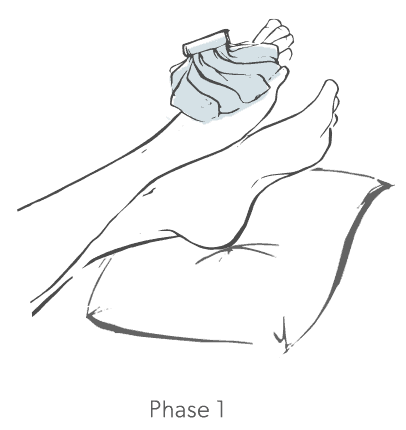Foot Care
Foot Care
How can I prevent a bunion from happening?
Here’s the truth about bunions that you’re probably not reading anywhere else:
You really can’t prevent bunions from forming.
If you have a bunion-causing structural imbalance in your foot, you will likely end up with a bunion–or two.
What you can do is help slow down the bunion formation. If you are pronating too much when you walk, a shoe insert or custom orthotic may help prevent that. Stretching exercises for a tight Achilles tendon can be helpful, since tight Achilles tendons can lead to flat feet and bunions.
Shoes don’t cause bunions, but they do aggravate them, so wear shoes with a wide toe-box so you’re not squeezing your toes into unnatural points. Soft fabric helps too. Sneakers are flexible and supportive. And look for a sturdy heel counter, where your heel is not able to move around too much, so your foot will not pronate or roll inward as you walk.

Foot Care
Home remedies
There are certain things you can do at home to treat the symptoms of a bunion.
But just be clear with yourself, you’re treating the symptom, not the cause.
These remedies are meant to alleviate pain and soreness, but cannot reverse or prevent the bunion from forming.
If you’re already developing a bunion, try a toe separator from the drugstore to place in between the first and second toes for temporary relief. Icing and elevating the foot, especially after working out, may reduce swelling and pain. And again, choose shoes with a wide toe-box and soft fabric or leather so as not to aggravate the situation. Moleskin pads placed on the outside of the big toe joint can prevent further irritation of the skin.
Shoe inserts or custom orthotics may make walking a bit less painful. However they may also make your existing shoes tighter, putting more pressure on the joint. A doctor may suggest anti-inflammatory, over-the-counter pain medication or give you a cortisone shot to reduce swelling.
Another myth? Exercises designed to strengthen the foot muscles or stretch tendons will help reverse a bunion’s formation. Not true. Dance and yoga teachers may suggest exercises to stretch the tendons that are pulling the first toe on an angle, but this won’t help the bone that is already misaligned. These exercises may relieve some discomfort, but there is nothing other than surgery that will correct the bone misalignment causing the bunion.

Foot Care
What if I pretend I don’t have bunions?
There’s no upside to neglecting a bunion.
Bunions are progressive, meaning they will get worse over time.
Maybe in your ‘20s or ‘30s you can tolerate your bunions and work around them. But as you age, repetitive motion and repetitive stress on the big toe joint will eventually prevail and a bunion will probably form. Cartilage in the joints may break down, leading to arthritis, stiffness and a non-functioning joint.
Ultimately, bunions become a quality of life issue. Bunion pain can be debilitating, preventing you from certain weight-bearing exercises like running, hiking, yoga or even walking.
Many people feel it more on hard surfaces, like cement sidewalks. Certainly your shoe options will be limited. The embarrassment over feet that may look somewhat deformed doesn’t really go away, and can start to dominate your thoughts and affect your self-esteem. Like anything else that takes up too much of your energy and mental attention, there comes a point when you just have to take action. Some people wait till this point to have surgery, others anticipate it by dealing with the problem early on.

Foot Care
If the shoe fits
Wearing shoes to accommodate your bunions can help relieve the pressure and pain you may feel. A wide-toe box and soft, pliable fabrics and leathers will be more comfortable.
Low heels will put less pressure on the big toe joint.
Look for shoes that have a sturdy heel counter to keep the heel firmly in place and prevent hyper-pronating or rolling onto the inside of the sole. This is why backless shoes, like clogs, are not ideal for bunion-sufferers though you might think they would be. Though some people opt for open or T-strap sandals that let it all hang out, this look is not for those who are feeling embarrassed to begin with.
Finding shoes that don’t cause pain becomes increasingly difficult as the bunion progresses. In addition to the physical and emotional pain of a bunion, there’s a weariness that starts to creep in. And this can be reflected in shoe choice; some people just decide to throw in the towel and wear sneakers most of the time. That’s a personal choice.
Finding the right shoe is a way to work around your bunion, it won’t prevent one from forming altogether.

Bunion Fact # 81
Shoes don't cause bunions, they only aggravate them.
